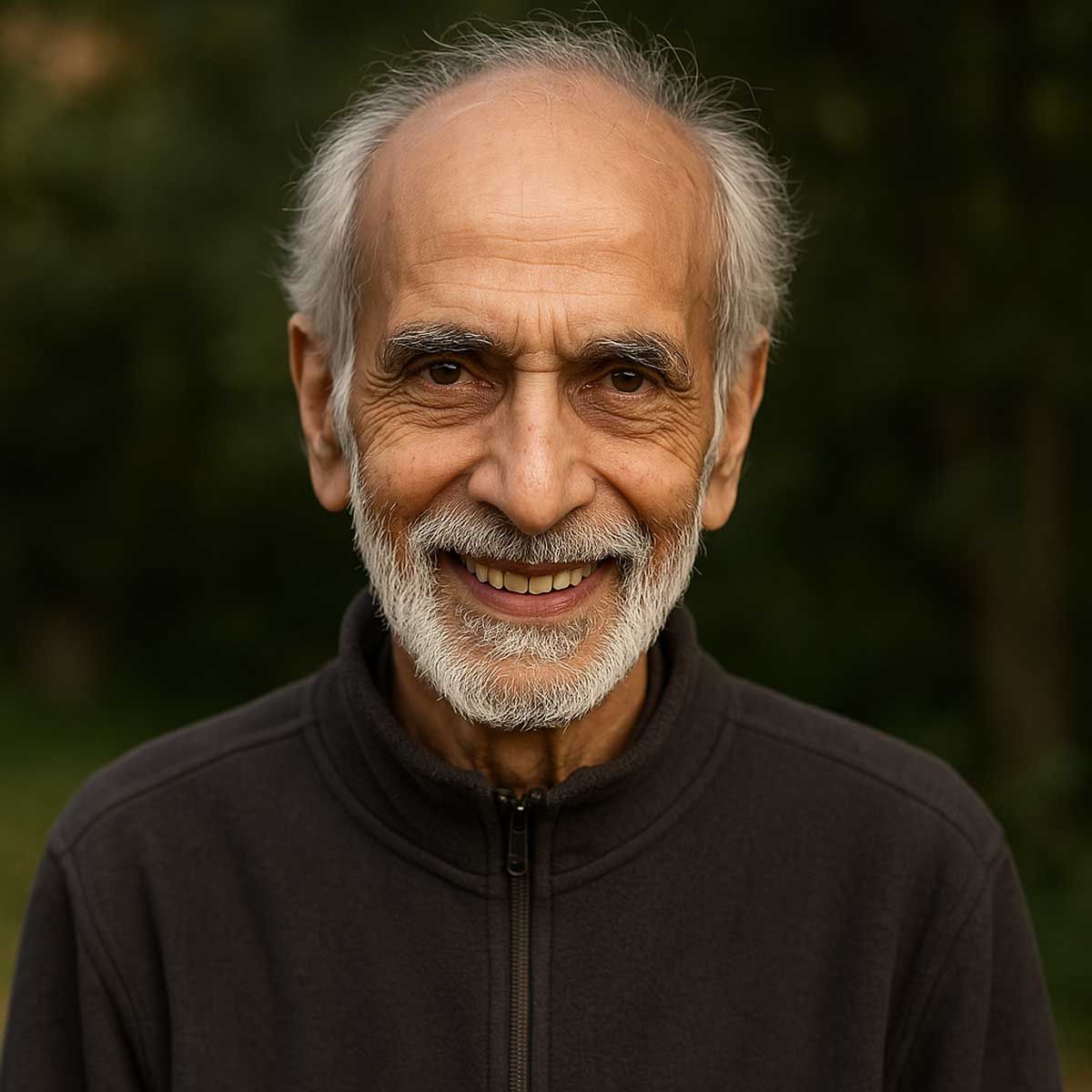Sanatan Articles
Satyaagrah
Written on
Satyaagrah
Written on
Satyaagrah
Written on
Satyaagrah
Written on
Satyaagrah
Written on
JOIN SATYAAGRAH SOCIAL MEDIA
"Their barbarism will stand as their shame for all eternity": Hath Kataro Khambh - Blood-stained history of Goa which no one discusses, crimes done by co-founder of the Society of Jesus Francis Xavier, 80000+ Hindus hands were cut off near this pillar

Where the Kadamba by pass converges at Old Goa stands a tall and slender column. It is a very intriguing pillar. This elegant pillar quitely narrates a tale of woe. In local it is popularly called the ‘Hatkatro Khambo’ literally meaning a pillar where hands were chopped.
|
It is a relic of an ancient temple and going by some portions, it appears to be from the Kadamb era, cirac 12th – 13th century AD,when Portuguese razed several temples and used the relics of the temple such as the pillars, capitals, doorframes and window to decorate their own structures in the 16th and 17th centuries.
The inquisition was the darkest and most dreaded chapter in the history of colonial Goa. It was introduced in October 1560 at Old Goa. The Hatkatro Khamboo today is a symbol of the horrors of inquisition let loose by the Portuguese ecclesiastical authorities on the Hindus.
On the Hatkatro Khamb of Old Goa there is a short Halle Kannada inscription, which must be of the ancient temple from Kadamb era.
The inscription which reads as ‘DAYADNYA’ alongwith the number four in Kannada was discovered by Dr. P. P. Shirodkar, Director of Archives, Archaeology and Museum when he had gone over there on October 15 to look for the vestiges if any of the dreaded Goa Inquisition.
The inscription remained undetected for centuries probably on account of the fear traditionally associated with this monument is the Inquisition. The New Pillory notoriously called as ‘Hatkatro Khambo’ by the local people had been constructed by the end of the 16th century when the Old Pillory which stood close to the rotunda of the statue of Mahatma Gandhi was abandoned. These pillories served as the devices for publicly punishing the offenders of the law who on being tied to it were whipped. At times, it was used to disjoint the hands by twisting the cords so tightly that the victim used to lose the upper limbs permanently. That’s the reason why the local people have continued to call it ‘Hatkatro Khambo’ (Hand cutting Pillar). It lies at the foot of the mount of the Cross of Miracles, on way to Neura.
During the last century, as illustrated by Sr. Lopes Mendes in his book A India Portgueza, it had seven laterite steps for the victims to climb up and it served as a platform for the pillory. But during the present century it has been repaired and since it is in disuse no steps have been provided except about 31/2 ft. partly plastered platform of laterite.
The Pillory which formed two different parts pf the pillars of the old temple were joined together by iron rings to keep it erect. The upper portion with the capital at the top is round in shape and the lower portion is SRIDHARA i.e. an octagonal pillar with a square base. It has roundish ornamental sculpture above it, which had formed as a base for fixing the upper pillar. The inscription is at the foot of the pillar and the number four is just below the ornamental round part above.
The existence of the inscription gives credence to the belief that the two parts of the pillory were originally the pillars of the old temple and most probably of the old Shiva temple of Saptanath in Malar area of Divar the stones of which had been used under instruction from the Portuguese authorities for construction of the churches and convents at Old Goa. The Saptanath temple had been erected by Madhav Mantri, a Minister of the Vijaynagar Kingdom in 1931 A.D. which was subsequently destroyed during period of Bahamani rule in 1471 and later on by the Portuguese. In 1515, Fr. Andre Corsali, a resident from Florence while writing from India had described it as one of the best Temples he had ever seen and that its sculpture and architecture far surpassed the European stone ornamentation.
The word ‘DAYANANDA’ on the pillar may be a reference to Lord Shiva, who is considered as ‘one who shows mercy’. The number four probably refers to four sects of Shaivism namely Kapalic, Kalamukh, Pashupat and Shaiva. This leads one believe that it might have been a part of the pillar of a Shiva temple which could be of only one in the vicinity of Old Goa, i.e. Saptanath of Divar. Incidently, it can be pointed out that the exquisitely carved pillar probably a Deepstambh of the same temple still stands in the inside compound of the Museum of the Archeological Survey of India at Old Goa and its upper portion with arrangement for wicks and oil has been used as a Baptismal Font at the door of the Church of St. Francis of Assisi.
The discovery of the new inscription throws new light on the pillar architecture of ancient Goa.
|
Goa Inquisition
The Goa Inquisition (Portuguese) was an extension of the Portuguese Inquisition in Portuguese India. Its objective was to enforce Catholic Orthodoxy and allegiance to the Apostolic See of Rome (Pontifex). The inquisition primarily focused on the New Christians accused of secretly practicing their former religions, and Old Christians accused of involvement in the Protestant Revolution of the 16th century. It was established in 1560, briefly suppressed from 1774 to 1778, continued thereafter until it was finally abolished in 1812. Those targeted were predominately accused of crypto-Hinduism. Those accused were imprisoned and depending on the criminal charge, could even be sentenced to death if convicted. The Inquisitors also seized and burnt any books written in Sanskrit, Dutch, English, or Konkani, on the suspicions that they contained deviationist or Protestant material.
The aims of the Portuguese Empire in Asia were combating Islam, spreading Christianity, and trading spices. The Portuguese were guided by missionary fervour and intolerance. Examples of this include the Madura Mission of Roberto de Nobili (nicknamed the White Brahman), as well as the Jesuit mission to the court of the Moghul emperor Akbar, with which the Inquisition enforced the subjection of the Syrian Church to the Roman Church at the Synod of Diamper in 1599.
Between the Inquisition's beginning in 1561 and its temporary abolition in 1774, around 16,000 persons were charged. Most of the Goa Inquisition's records were burned by the Portuguese when the Inquisition was abolished in 1812. It is therefore impossible to know the exact number of those put on trial and the punishments that they were given. The few records that have survived suggest that at least 57 were executed for religious crimes, and another 64 were burned in effigy because they had already died in jail before sentencing. It is estimated that by the end of the 17th century, the Christianisation of Goa meant that there were less than 20,000 people who were non-Christians out of the total Goan population of 250,000. From the 1590s onwards, the Goan Inquisition was the most intense, as practices like offerings to local deities were perceived as witchcraft. This became the central focus of the Inquisition in the East in the 17th century.
In Goa, the Inquisition also prosecuted violators observing Hindu or Muslim rituals or festivals, and persons who interfered with Portuguese attempts to convert non-Christians to Catholicism. The Inquisition laws made reconversion to Hinduism, Islam & Judaism and the use of the indigenous Konkani language and Sanskrit a criminal offence. Although the Goa Inquisition ended in 1812, discrimination against Hindus under Portuguese Christian rule continued in other forms such as the Xenddi tax implemented from 1705 to 1840, which was similar to the Jizya tax. Religious discrimination ended with the introduction of secularism via the Portuguese Constitution of 1838 and the subsequent Portuguese Civil Code of Goa and Damaon.
|
Declare the ‘ Hatkatro Khamb ’ in Goa as a National Monument
Hatkatro Khamb is in the same area where Christians hold fair for Xavier whom they treat as a Saint. This pillar is standing even today as a witness of extreme oppression by Portuguese rulers, of Hindus in Goa; but it is in very bad shape today. The condition of this ‘Hatkatro Khaamb’ is very pathetic. The two chains on its sides have been pulled out and taken away by someone. There is no fence around this ‘khaamb’ for its protection. No board has been put up there explaining history of this ‘khaamb’. Several people fought against tyrant Portuguese regime with valour. Their hundreds of descendants are living in Goa even today; whereas some of them have settled in other States after losing everything in such fight. These families settled in other States still feel very close to Goa.
The patriotic citizens of Goa are very much displeased with the Congress regime which ruined Goa in the name of tourism. If tourism is to be considered as a means of financial progress, it can be in fact, given more importance even by preserving the sanctity of culture of Goa. Thousands of tourists visit Germany every year to see the concentration-camps set up by Hitler for eliminating Jews. Historical places like ‘Haat Kataro’ can also become tourists’ attraction.
Hatkatro Khamb is not at all a place to be ashamed of for people of Goa. There is no reason that people of Goa should feel such inferiority complex towards this place. It is a symbol of people of Goa who sacrificed their life for protecting own self-respect. For them, it is the pillar of memories.
Things and places, structures which keep the history of bravery and fortitude alive are very important because such things, places and structures are witness to certain incidents of history. Oppression and atrocities meted out to natives by other countries or tyrant regimes have been preserved by countries like Germany, USA, Russia etc. even today. The reason for the same is such things and places give a message to keep one’s patriotism kindled so as to avoid repetition of such history and to create awareness amongst future generations of Goa, towards sacrifices made by their ancestors. .
The Goa inquisition is regarded by all contemporary portrayals as the most violent inquisition ever executed by the Portuguese Catholic Church. It was marked by an unparalleled barbarism, inhumanism and fanaticism, the most horrifying and bloodiest inquisition faced by Goan Hindus who suffered for 252 years (1560 to 1812). Those Hindus who refused to convert to Christianity or those found ‘guilty’ of secretly practicing Hindu Dharma despite converting were punished in the cruelest manner possible. It is heartbreaking that this Inquisition has no place in Indian history books, nor is it openly discussed.
References:
 Support Us
Support Us
Satyagraha was born from the heart of our land, with an undying aim to unveil the true essence of Bharat. It seeks to illuminate the hidden tales of our valiant freedom fighters and the rich chronicles that haven't yet sung their complete melody in the mainstream.
While platforms like NDTV and 'The Wire' effortlessly garner funds under the banner of safeguarding democracy, we at Satyagraha walk a different path. Our strength and resonance come from you. In this journey to weave a stronger Bharat, every little contribution amplifies our voice. Let's come together, contribute as you can, and champion the true spirit of our nation.
 |  |  |
| ICICI Bank of Satyaagrah | Razorpay Bank of Satyaagrah | PayPal Bank of Satyaagrah - For International Payments |
If all above doesn't work, then try the LINK below:
Please share the article on other platforms
DISCLAIMER: The author is solely responsible for the views expressed in this article. The author carries the responsibility for citing and/or licensing of images utilized within the text. The website also frequently uses non-commercial images for representational purposes only in line with the article. We are not responsible for the authenticity of such images. If some images have a copyright issue, we request the person/entity to contact us at satyaagrahindia@gmail.com and we will take the necessary actions to resolve the issue.
Related Articles
- ‘Hostel’ where Lavanya committed suicide is found to be Vatican funded orphanage with an expired licence in NCPCR investigation: Tamil Nadu
- Illegal church built on the government lands by unlawful encroachment in Kolar demolished following the orders of the Karnataka High Court: Karnataka
- Tamil Nadu Police in the wee hours arrested Ganesh Babu from Pudukottai district who had given a complaint about religious conversion happening in his area
- SC-ST Forum and Odisha Hindu organizations filed multiple complaints against Pastor Bajinder Singh to NCST for organizing a massive conversion event targeting innocent tribals of indigenous faith: Pastor absconding
- Lavanya who chose death than choosing Christianity has become a nationwide Resolution #JusticeForLavanya: BJP launches massive agitation in Tamil Nadu after girl committed suicide because of forced conversion by school
- Self-styled controversial Christian Prophet Bajinder Singh, infamous for fake ‘healing camps’ to hold a meeting in Mumbai at MMRDA Ground: Johnny Lever, Rakhi Sawant, and other celebrities promote
- 23 Jan to 29 Jan - 2022 - Hindus under attack: Bulletin roundup of persecution, discrimination, and hate crimes against Hindus
- Local Hindus protested against Christian Missionaries who organised ‘satsang’ in Zirakpur, Punjab, and attempted forced religious conversion: locals started chanting slogans like Jai Shri Ram and Bharat Mata Ki Jai
- ‘Justice for Lavanya’ takes a national spotlight, BJP insists CBI enquiry, bats for a law against forceful conversions in Tamil Nadu: Media conveniently ignored Lavanya suicide in the mainstream narratives
- "Afterall, why should Mumin have all the fun": Bihar sees Christian missionaries adopting 'love jihad' tactics to lure Hindu girls for conversion, with 60% converted at places, VHP responds with 2500 reconversions, a silent but significant religious shift
- Christian evangelists offend the local cultural ethos of Assam by appropriating Bihu dance music to convert members of backward communities of Nepalese and Adivasi / Banvasi who work in the tea gardens of Assam
- "The future depends on what you do today": Christian Pastor Chris Hodges reports over 100k Hindu conversions in a week, cites increased obstacles in North India due to RSS and PM Modi's policies, asserts 'Miracles' as key in overcoming challenges
- Supreme Court agreed to hear a case of an Evangelist and founder of Global Peace Initiative KA Paul - Centre had refused to renew FCRA registration of various NGOs who failed to justify their donations
- State Police arrested Kerala based Christian pastor couple of forcefully converting over 1000 Hindu Adivasis working in the coffee estates of Kodagu district: Anti-conversion ordinance becomes reality in Karnataka
- "Christ's Facade in Chittoor": Sacred tank of Hindu temple "Venugopala Swamy Mandir" in Andhra Pradesh's Chittoor becomes a flashpoint for religious tensions as baptism performed for conversion of Hindus to Christianity, local church members booked





















